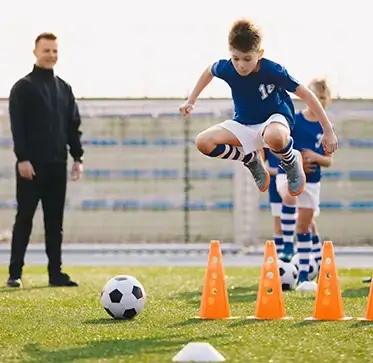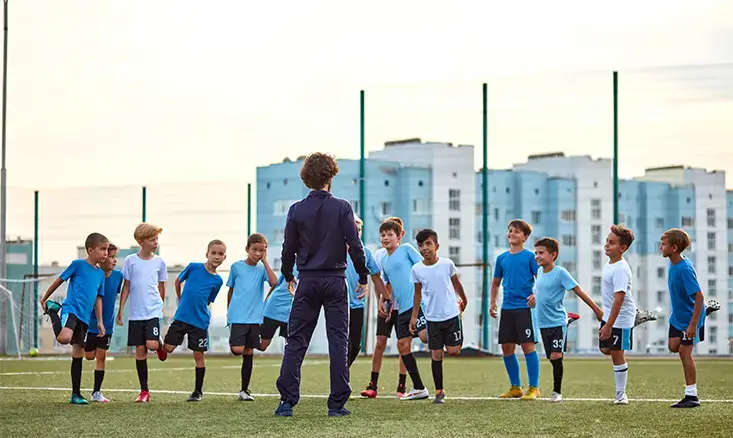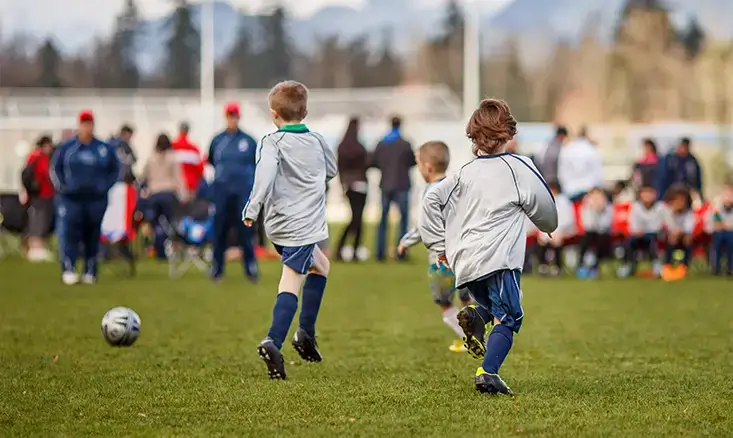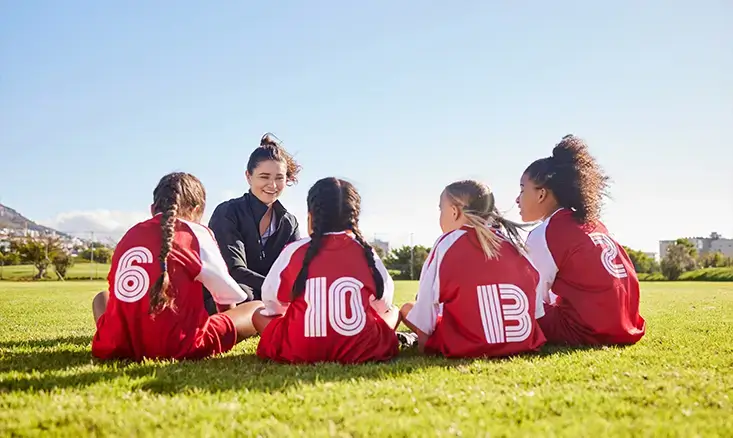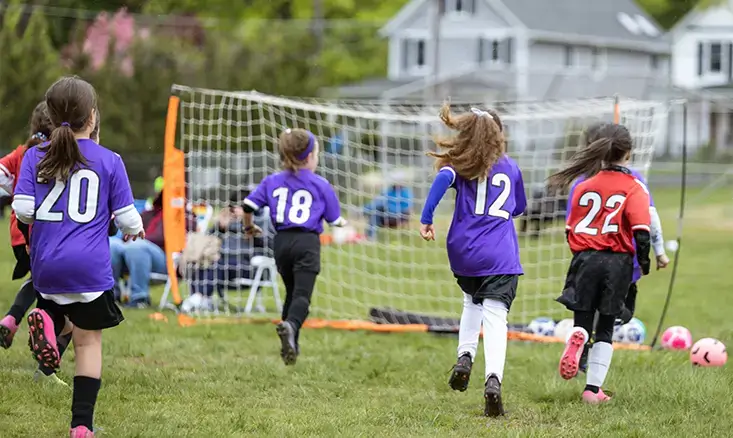In the quest to develop proficient, well-rounded young soccer players, the integration of fun, dynamic soccer drills into training sessions is indispensable. Drawing from a wealth of coaching experience, I’ve identified three drills that stand out for their ability to foster essential soccer skills while ensuring the game remains enjoyable for the players. These drills are tailored to encourage creativity, teamwork, and strategic thinking, all while keeping the players engaged and motivated.
The World Cup drill is a versatile and highly engaging game that places the coach in the role of ball distributor, allowing for the adjustment of play parameters to suit the skill levels and learning objectives of the participants. Whether it involves solo players or teams, specific scoring rules (like left-foot-only goals), or the necessity of passing before a goal counts, this drill offers endless variations. The coach can introduce multiple balls into play and carefully match players against those of similar skill levels, ensuring a fair, fun, and challenging environment for everyone. This drill not only enhances technical skills but also promotes quick thinking and adaptability on the field.
The World Cup drill can be played with any number of players, making it highly adaptable for team sizes. Players are either divided into small teams or play individually. The coach serves as the ball distributor, with all soccer balls placed within the goal or at a central point near the playing area.
The coach kicks or throws a ball into the field, and players (or teams) compete to score.
Depending on the session’s focus, the coach can set specific scoring rules, such as goals only counting if scored with the left foot, requiring a header, or necessitating at least one pass before attempting a goal. These parameters can be adjusted to target particular skills or challenges.
As goals are scored, balls are either reintroduced by the coach or players fetch them from the goal to continue to play. The coach has the flexibility to increase the game’s intensity and challenge by adding more balls into play.
The coach can also direct which players or teams compete against each other, allowing for balanced matchups based on skill levels or physical abilities. This ensures that all participants are engaged and challenged appropriately, fostering a positive and inclusive learning environment.
By changing the game’s rules and conditions, coaches can tailor the drill to focus on specific areas of development, such as dribbling, passing, shooting accuracy, or teamwork.
Players must constantly assess the field, decide when to shoot or pass, and strategize on the fly, enhancing their game intelligence and decision-making skills.
The competitive nature of the World Cup drill teaches players to perform under pressure, improving their ability to stay composed and make smart plays in game-like situations.
The game-like setting keeps practice sessions lively and enjoyable, maintaining high levels of player engagement and enthusiasm for the sport.
Use this drill as an opportunity to encourage players to try new moves, take risks, and express themselves creatively on the field.
Offer constructive feedback and encouragement throughout the game, highlighting good plays, suggesting areas for improvement, and fostering a positive learning environment.
Set up with two back-to-back small goals in the center of a square field, this drill divides players into four teams and introduces them to a multi-directional game environment. With two balls in play and simultaneous matches, participants learn the importance of turning, shielding, and accurate passing. This setup teaches players to be aware of their surroundings and to understand that the field of play is not just linear but can be approached from multiple directions, adding a layer of tactical depth to their game.
Create a square playing area suitable for the number of participants. The size of the square can be adjusted based on the age and skill level of the players to ensure the drill is challenging yet manageable.
Place two small goals back-to-back in the very center of the square. These goals should be small-sided to emphasize precision and control.
Divide the players into four teams, each assigned to one side of the square. Different and multiple games can be played at the same time.
The primary objective for each team is to score in either of the two goals. Since the goals are back-to-back, players must be constantly aware of their positioning, the location of their teammates, and the movements of the opposing teams.
The coach or a designated player initiates the drill by introducing one or two balls into play. This can be done by rolling or kicking the balls into the square.
Teams compete to gain possession of the ball(s) and score goals. Since there are two balls and goals, players need to be vigilant, as the play direction can quickly change.
A goal can be scored in either of the two goals, but teams must be mindful of defending their goal against other teams trying to score.
Teams need to balance their focus on attacking and defending, as threats can come from multiple directions. Players learn to transition quickly between offensive and defensive roles.
Players improve their understanding of space, learning to exploit openings and defend compactly when necessary.
The dynamic nature of this drill forces players to make rapid decisions regarding when to attack, pass, or defend.
The close quarters and necessity for precision in passing and shooting help hone players’ technical abilities.
Success in this drill requires teams to work together efficiently, promoting teamwork and on-field communication.
Coach players to constantly scan the field, keeping track of both balls, teammates, and opponents.
Emphasize the importance of quick passing and movement to keep opponents unbalanced.
Ensure all teams have the opportunity to compete against each other, fostering a variety of challenges and learning experiences.
While attacking play is often the most engaging, it reminds players of the importance of defending, especially in a multi-directional game.
This two-goal center field drill is an excellent way to simulate the unpredictable nature of a soccer match, where players must constantly adapt to changing situations. By integrating this drill into practice sessions, coaches can provide a comprehensive training experience that not only improves individual skills but also enhances players’ tactical understanding and teamwork.
In this drill, a square field is marked with two goals on opposite end lines, and players are split into two groups. Each group starts at midfield on the outside of the field, running behind their respective goals before entering the field to engage in play. The coach introduces the ball into the square, setting the stage for a dynamic match where players strive to score one of the two goals. This drill can be modified to increase complexity, involving more players or specific scoring rules, thus enhancing players’ ability to think and act swiftly in various game situations. It emphasizes the game’s vertical and horizontal dimensions, along with the strategic use of backward, diagonal, and sideways movements.
A square or rectangular field is marked out, large enough to allow for free movement and engagement among players.
Four small goals are used in total. Two goals are placed on opposite ends of the field, facing each other.
Participants are divided into two teams (Team A and Team B), with each team starting at midfield but on opposite sides of the field, outside the marked playing area.
The primary aim is for players to score one of the two goals after running around the field and entering the playing area, incorporating dribbling, passing, and shooting skills under game-like pressure.
On the coach’s signal, players from both teams begin running in opposite directions along the outside of the field, behind the goals and then re-enter the playing area. This running component adds a conditioning element to the drill.
As players enter the field, the coach introduces a ball into play. The teams then compete to gain possession, control the ball, and attempt to score in one of the goals.
The initial running segment improves players’ endurance and mimics the off-the-ball movements required during matches.
Players learn to transition quickly from defense to attack (and vice versa), developing a deeper understanding of spatial positioning and tactical play.
The drill reinforces the importance of accurate passing, controlled dribbling, and precise shooting under pressure.
Successful execution requires effective communication, teamwork, and the ability to make quick decisions based on the changing dynamics of the game.
Encourage players to think about how they transition from running to engaging with the ball, highlighting the importance of quick adaptation from physical exertion to technical play.
Remind players to communicate with their teammates during the drill, calling for passes or organizing defensively.
Use variations of the drill to simulate specific game situations, such as being a goal down with minutes to play, to teach players how to manage different scenarios.
Offer constructive feedback throughout the drill, praising good plays and offering advice on areas for improvement.
The “End Line Goal Drill” is a dynamic and effective way to simulate match conditions, challenging players to apply their skills in a context that mirrors the physical and mental demands of a real game. By integrating this drill into training sessions, coaches can significantly enhance players’ all-around soccer abilities while keeping the practice engaging and competitive. The key to all of these drills is no player lines. All of the players are playing and engaged all the time. The parameters can be changed in any combination. You can have multiple small games happening at the same time. The kids love this game.
With three people, you can set up small, competitive drills like 1v1 with one player as a rotating goalkeeper or neutral passer. Rotate roles frequently to give everyone a chance to play each position, which enhances individual skills and keeps the practice engaging.
Incorporate games like ‘World Cup’ or small-sided matches with unique rules (e.g., goals must be scored with a volley) to keep the energy high and enjoyable. Mixing up drills with competitions that allow players to showcase their creativity will also keep practices lively and fun.
Begin with a warm-up to get muscles ready and prevent injuries, followed by skill-focused drills, such as passing and dribbling. Progress to tactical exercises, like positioning or set plays, and finish with a scrimmage to apply skills in a game-like setting. Always include cool-down stretches to end the session.
Rule 1 in soccer typically refers to the “Field of Play.” The rule outlines the dimensions and markings of the soccer field, ensuring it meets the standard requirements for length, width, goal size, and field markings necessary for official matches.
Rule 3 pertains to the “Number of Players.” It states that a match is played by two teams, each consisting of no more than eleven players, one of whom is the goalkeeper. The rule also covers substitutions and the conditions under which a match may or must be forfeited if a team does not have the required number of players.
